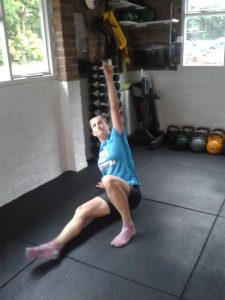Having listened to a really good podcast recently (the physio matters podcast – Session 43 with Nick Grantham) about the continuum of rehab, physio and strength and conditioning I thought it might be an idea to mention a couple of things that we do here in Global Therapies which might not seem to fit under the classic “physiotherapy” banner. To do this, I will talk about a couple of people that I have been seeing in the past few months.
Where does Physio start?
You would imagine this would be fairly obvious. When injury has occurred (through a sudden, or a long term issue), tissues may well be weakened, pain might be a part of the problem, and the person is certainly not functioning as well as they would hope to be.
Physiotherapy has an aim to get them back functioning normally, and that tends to start with us working in the clinic room on fairly basic strengthening and movement patterns.
The key here is to challenge the person, the muscles, the connective tissue and the nervous system which combines the whole lot together. We are adaptable organisms and need stimulus to change. If there is no stimulus, the body does not change.
In the best cases, I see someone, they learn what they need to do, they go away and do it, and the only time I see them from then on is as they run or cycle past me on the hill, or I see them walking around town.
All well and good, but is there another side to physio?
Is Physio short term or long term?
I have a lovely hyperflexible patient /client who comes to me for “physio”. She comes once a week, and has done for a year – and her friends ask her …. “Physio? Again? Aren’t you fixed yet? That’s rubbish….”
Our “physio” does not just take place in the clinic. We went past that stage a LONG time ago. It also takes place in here.

We are still working on rehab. We are still working on getting her to full strength. We are still working at improving her stability, balance and general ability to get through life. It’s just that her current level of function is far, far above that where she originally came in. It far exceeds the level at which I can challenge her in the clinic room, hence the gym, but fundamentally, we’re still doing physio.
If I cannot challenge her and give her the stimulus to improve I am not doing my job.
Take another person who previously came for physio for back, knee and hip pain. She is over 60 and really wants to get back to being able to do normal things – like walk around the supermarket without pain. We have gone past the stage of clinic work, and within a few weeks of working in the gym she is moving all the plant pots in her garden, stands from a chair with less effort, worry and pain, and, most surprising to both me and her – actually looks forward to doing physical exercise in a gym setting.
For both these people, physio is not a thing that gets done to them. It is not waiting for a magic wand. It is something they take an active part in, and something that will enable them to be able to do the things they want to do.
So… Where does physio end?
Wherever you want it to. There is not a crossover from physio to personal training – more a continuum into strength and conditioning which is perhaps something to explore another time. Maybe the most fundamental thing we should be thinking about is ensuring that each person we see gets to be challenged to do as much as they are able to cope with.





